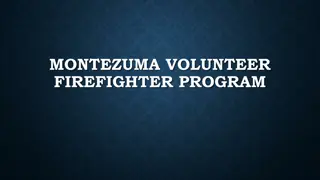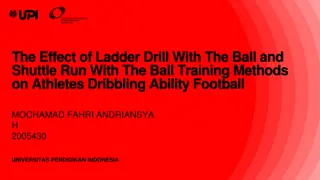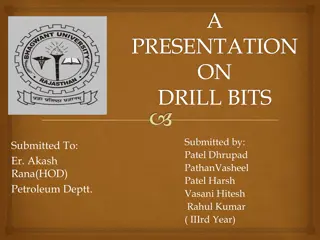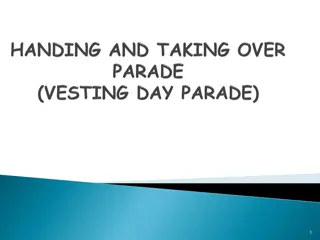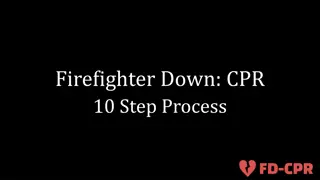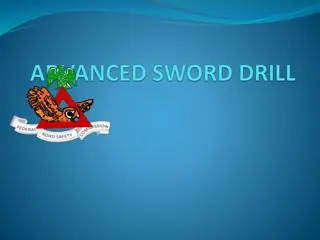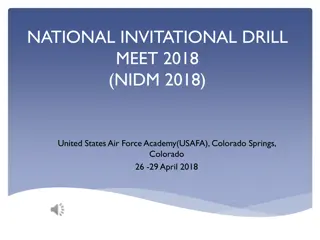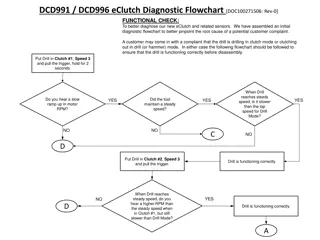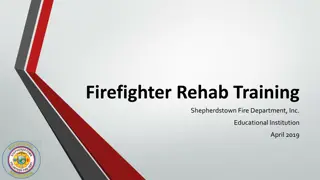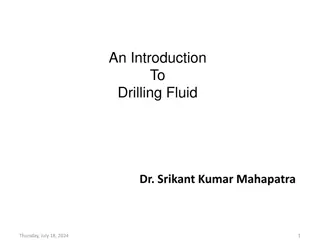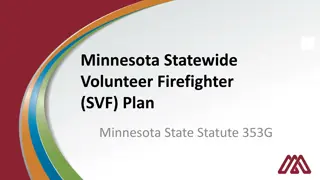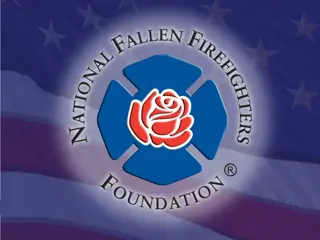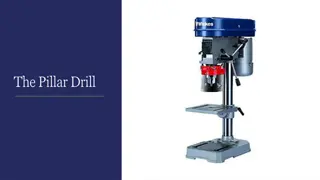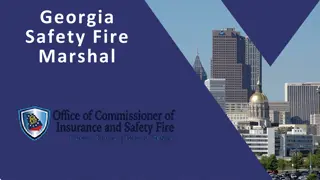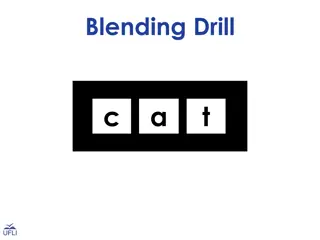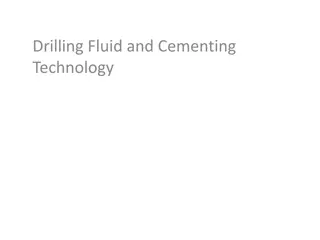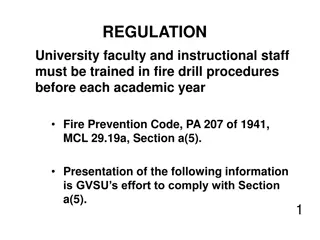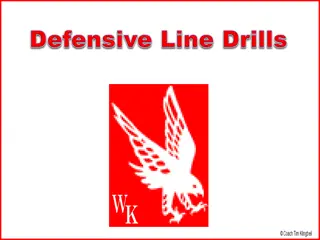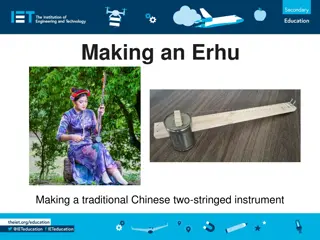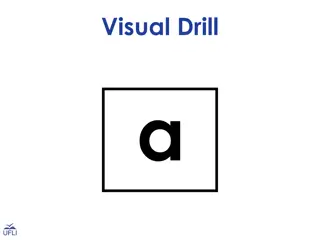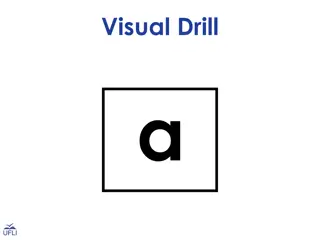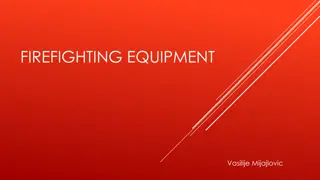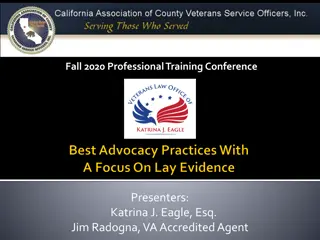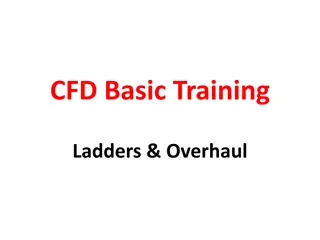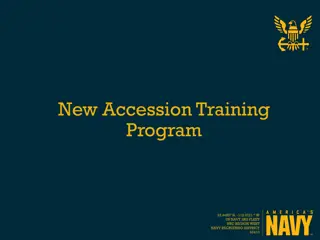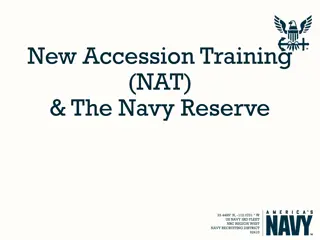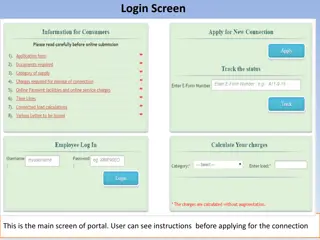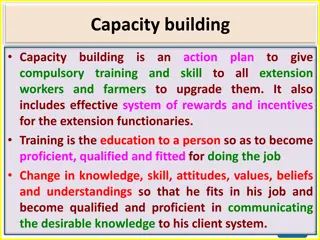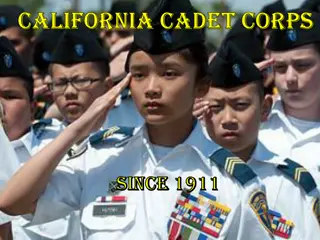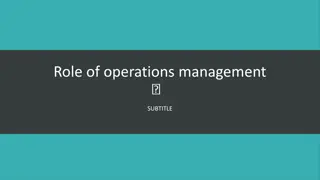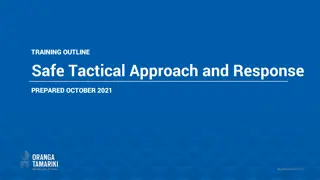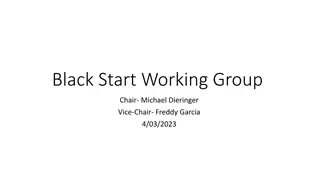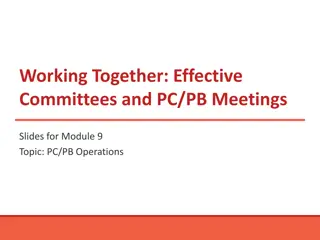Firefighter Training Drill: Hose Connection and Hydrant Operations
This training drill focuses on teaching firefighters how to safely connect a 5-inch supply line to a hydrant and efficiently flow water to the engine. It covers essential equipment, safety procedures, and objectives like using proper terminology, understanding responsibilities, and ensuring protective gear is worn correctly. The drill emphasizes hands-on participation, classroom discussions, and practical exercises to enhance firefighting skills.
Download Presentation

Please find below an Image/Link to download the presentation.
The content on the website is provided AS IS for your information and personal use only. It may not be sold, licensed, or shared on other websites without obtaining consent from the author. Download presentation by click this link. If you encounter any issues during the download, it is possible that the publisher has removed the file from their server.
E N D
Presentation Transcript
Equipment: CFD Basic Training book One Engine 2-11-1 or 2-11-14 5 hose, Manifold, 3 way gate, Gate Y Single gate Hydrant wrench, rubber mall, 2 & 5 spanner wrench, Adapter & reducer Siamese Full firefighter gear Instructors Needed Equipment: Instructors Needed: Two instructors & one Engine and 2-11-1 or 2-11-14
Teaching Methods; by hands on drill with all firefighters participation! Teaching Methods; Classroom lecture & discussions on subject matter followed Note: This drill will be conducted with (4) firefighters on the engine. This will consist of the officer, the chauffeur and two fire fighters. We are using this number to coincide with out department policy of requiring minimum of (4) fire fighters to be on board an engine before it can respond to calls. This can change with the officer s discretion. This drill will be conducted with (4) firefighters on the engine. This will consist of the officer, the chauffeur and two fire fighters. We are using this number to coincide with out department policy of requiring minimum of (4) fire fighters to be on board an engine before it can respond to calls. This can change with the officer s discretion. Note: Reference: Reference: Essentials of fire fighting! Commack Fire Department Operating Procedures!
Hose Lengths & Types: Hose 5 hose 3 hose 2 hose 1 hose Forestry hose Booster hose X_______________________________________________-------__ 100ft 50ft 25ft Thread Dia. Thread Type. X X X X X X X X 5 Storz 2 2 1 1 Sexless_ Nat. Std. Nat. Std. Nat. Std. -------__
Objective: completely and safely hook-up a 5 supply line to the hydrant and be able to flow water to the attached engine when directed to do so. Objective: To train fire fighters too properly, Safety Note: on the rear step while the engine is responding to a fire or laying a supply line Safety Note: - - No Fire Fighter should ever be on the rear step while the engine is responding to a fire or laying a supply line No Fire Fighter should ever be
Discuss objective with fire fighters Discuss terms used in objective and give explanations; Front suction/intake valve Wrap (key) a hydrant Lay a line Flush a hydrant Hook-up a hydrant Gate a hydrant with single gate or gated Y Charged line Male/Female couplers Display equipment needed to complete objective. Discuss equipment needed/ Discuss who decides to lay a line, when and where. Discuss chauffeurs responsibility briefly Discuss need for proper use of protective equipment and briefly remind them about placement of passports. Discuss flushing the hydrant (why) Brief questions and answer session.
Evolution: 1 single gate and rubber mallet. from the hydrant, flush the hydrant; place front suction hose on the hydrant and hand tighten the coupling. Next, remove the 2 cap facing the fire ground and place the single gate on to the fitting. Tighten the gate using the hydrant wrench. Ensure that the valve on the gate is in the off position. Charge the hydrant and inform the chauffeur that the hydrant is charged. Evolution: 1 - Front suction hook Officer: Chauffeur: Fire Fighter Front suction hook- -up (one FF only) up (one FF only) Officer: Make assignments. Chauffeur: Position engine near hydrant! Fire Fighter: Remove front suction hose, hydrant wrench, Remove the 4 cap
Evolution 2: Evolution 2: 5 hose (minimal crew of 4 FF or less) 5 hose (minimal crew of 4 FF or less) Officer: Make assignment Hose FF only. During actual response the Officer or Senior FF will do this. Officer: strap and hydrant wrench. Walk to hydrant and wrap hose around the hydrant. Next, return to the rear of the engine and remove the gated Y and 5 spanner wrench. Place these items next to the hydrant and tell the chauffeur to proceed to the fire. of 5 line is on the ground, unwrap the 5 hose and mount it to the 4 fitting facing the fire ground. Remain at the hydrant and wait for a signal, either visual or audible to charge the supply line. Once the line is charged, take the hose strap and follow the 5 hose back to the engine checking for kinks or any other problems. Report to the chauffeur or an officer when arriving at the engine! Chauffeur; using the bleeder valve evolution. Chauffeur: Position rear of engine just past the selected hydrant! Fire Fighter: Step down from the crew cab and walk to rear of the engine. Remove the 5 hose with the hose Chauffeur: Fire Fighter: Chauffeur: Move the engine forward approximately 50 feet Fire Fighter Remove the 4 cap and flush the hydrant. After the engine has stopped or when several lengths Chauffeur: Fire Fighter: Chauffeur; The chauffeur will connect the supply line to the engine and the air will be bleed from the line by This evolution will be done with the second fire fighter conducting these steps in the next
Evolution3: Evolution3: Packing the 5 Hose Officer: Packing the 5 Hose Officer: Make the assignments & direct engine movement. Chauffeur: Chauffeur: Position engine to drive over 5 hose Fire Fighters: engine and allow water to drain from the hose. The end of the hose that is upgrade can either be folded over or capped to prevent air from filling the hose after the water drains. Position two fire fighters in the hose bed, and one fire fighter on the rear step! Position the hose onto the bed, making sure that the coupling are, tightened. The couplings should be placed in the rear portion of the hose bed and they should lie flat with respect to the hose. They should not off the hose bed. This means that the portion of the hose, which will come off of the truck first, will be towards the rear step. Secure hose strap, hydrant wrench and Storz elbow. Fire Fighters: Shut down the hydrant and remove the 5 hose from hydrant and not be placed so they will flip over when being pulled Note: You don t have to open each coupler. Note: You don t have to open each coupler.
Equipment: CFD Basic Training Book One engine, 2-11-1 or 2-11-14 5 hose and 3 hose Manifold 3 way gate Spanner wrench - 5 & 2 Adapter & Reducer Double Male & Double female Siamese Equipment: Teaching Methods: 1 and one chauffeur for 2-11-14. Teaching Methods: Two instructors and one chauffeur with the engine. One chauffeur for 2-11- Reference: Reference: Essentials of fire fighting Commack Fire Department Operation Procedures! Objective: Objective: To train the firefighter in the use of 3 & 5 inch supply lines
Discuss the use of 3 and 5 supply lines to deliver large volumes of water. Another engine (3 of 5 hose) Ladder pipe operation (3 or 5 hose) Tower ladder operation (3 or5 hose) Sprinkler system (3 hose) Standpipe system (3 hose) Discuss how 3 and 5 hose is not to be used as a hand lines. How to supply water to 2-11-1 (3 hose) How to supply water to 2-11-14 water to the ladder pipe is to be supply by two 3 hose lines into the rear Siamese Water to the pump is to be supply by 5 hose line. (2-11-14) Discuss the use of a 3 way gate and the manifold Supply multiple hand lines Sue as a shutdown in a supply line Use to divide up a large supply of water for different functions 2-11-1 will be fed with a minimum of 2 - 3 (supply) lines into the Siamese located on both sides of the truck. 2-11-14 will be fed water for the ladder pipe by 2 3 (supply) lines into the Siamese located in the rear of the truck.
Discuss reverse lay to hydrant. Engine stops next to the engine that you re going to supply. Put end of the 5 (supply) line under tire of engine to be supplied. Leave one Fire fighter to hook-up the supply to the (5 ) intake of the engine. Proceed to hydrant and hook the 5 (supply) line to the 5 discharge of your engine. Hook-up front suction to the hydrant and charge hydrant (hydrant evolution) Discuss reverse lay to hydrant.
Discuss standpipe operations and sprinkler operations. Red Siamese fittings connection. Green Siamese fittings system. Yellow Siamese fittings sprinkler/standpipe system. A mechanical bell (gong) is associated with a sprinkler system and is located near the drainpipe of the system. Tall buildings are not the only structures equipped with standpipes. The primary factors are height and area of structure. They are found in office buildings, hospitals, warehouse, industrial buildings and shopping malls. Standpipe system can be categorized in two ways (a wet or dry system) Wet contains water in riser at all times. Dry contains no water and the only water supply is from the engine Combination sprinklers interconnected with a standpipe system are mostly wet and are of special concern because the demands for water flow of the sprinkler head and hose line attached to the standpipe system requires prompt augmentation by the Fire Department Pumper (engine) Standpipes and sprinkler system should be supplied with 3 lines. An engine connected either would be dedicated to only supplying water to either system. An operation containing sprinkler and standpipe system would require two separate pumpers. Discuss standpipe operations and sprinkler operations. Red Siamese fittings external to the building usually means it s a standpipe Green Siamese fittings external to the building usually means it s a sprinkler Yellow Siamese fittings external to the building usually means it s a combination (a wet or dry system)
Discuss specific Appliances: Double male hookup (2) female hose connections of the same thread diameters. Double female hookup (2) male connections of the same thread diameters. Reducer allows the connection of different diameter (larger to smaller) threads (1 & 2 diameter) Adapter allows connection of two different types of threads (i.e. National Standard to New York City) Siamese connects two supply lines and supplying water while connection of the second supply line is completed (it has 2 female & 1 male coupling) Discuss specific Appliances:
Hands On Have trainee s hookup to the hydrant to practice hydrant evolution. Stretch one length of 5 (supply) hose from discharge on the engine to the manifold. Demonstrate its use. Set up the portable deck gun and hookup the (2) supply lines of 3 hose. Connect them to the discharges on the manifold to the Siamese on the portable deck gun. Set up and feed 2-11-1 or 2-11-14 Repack hose. Review commercial building to visually identify sprinkler or standpipe connections. Hands On


